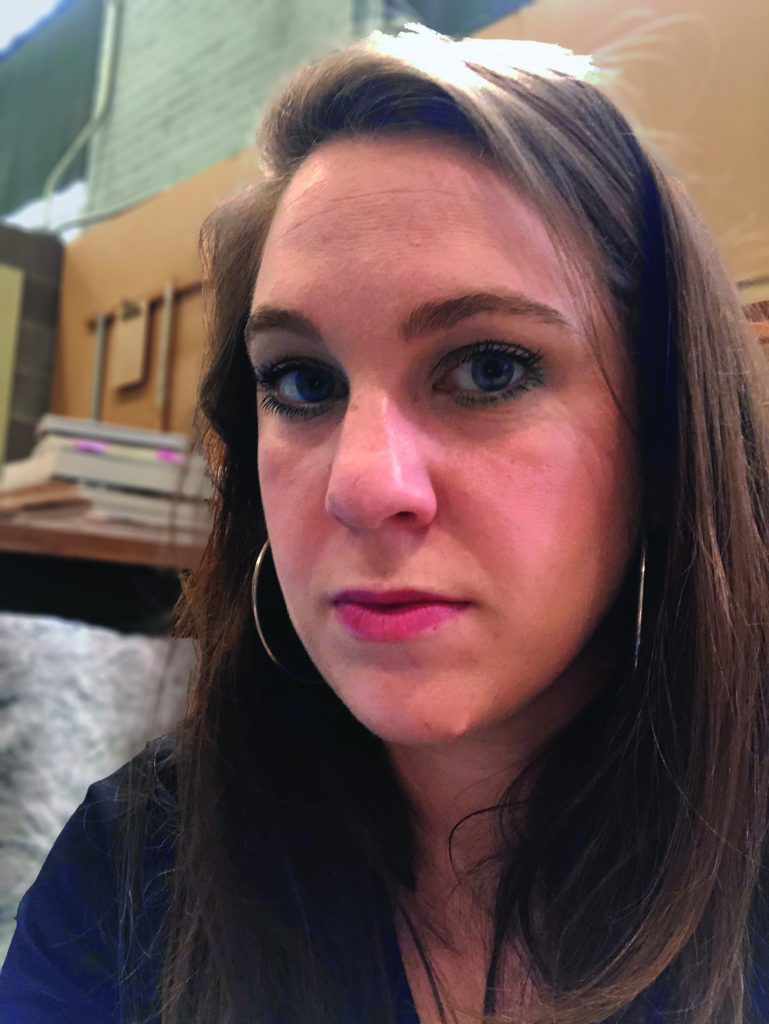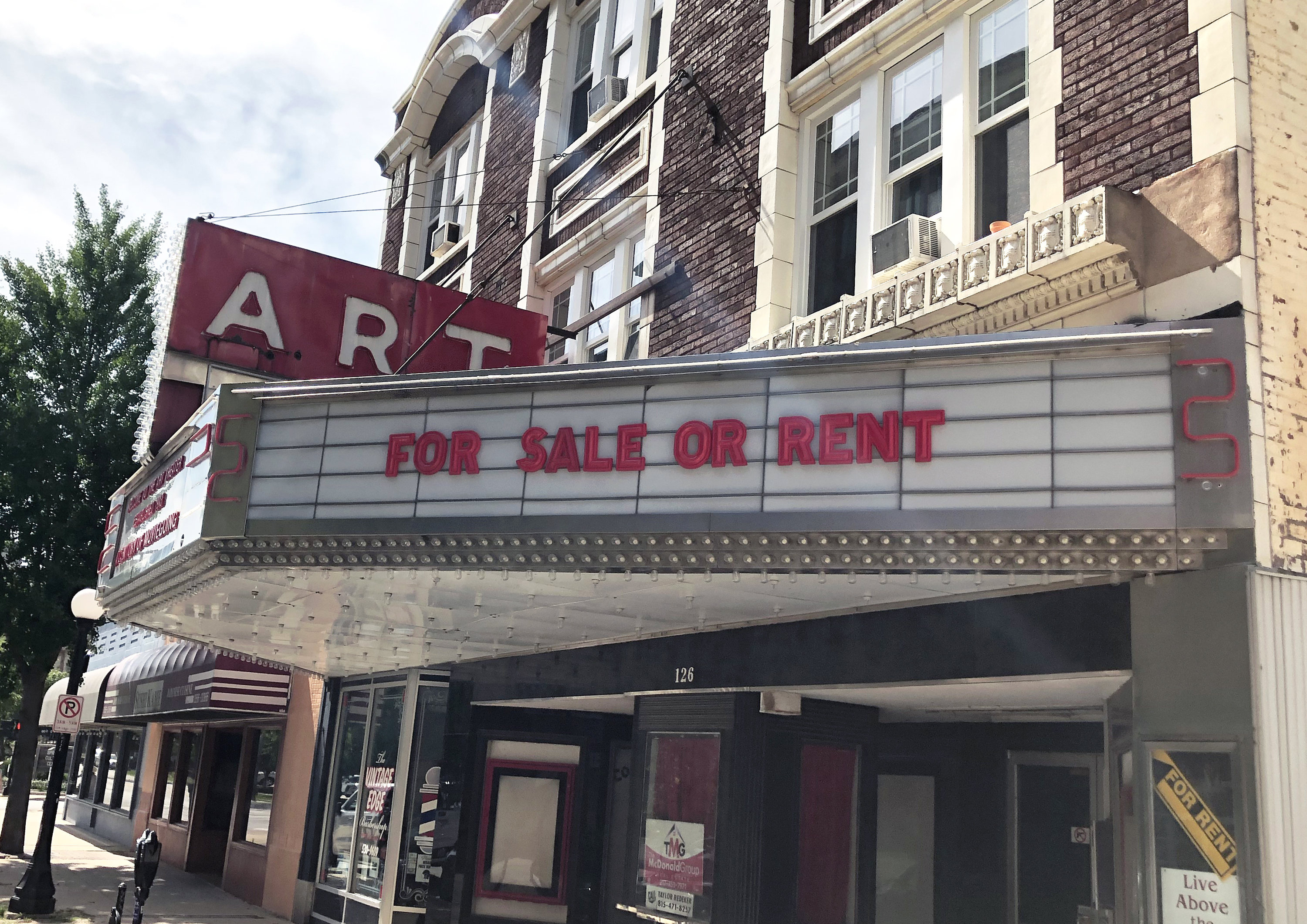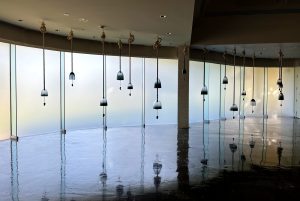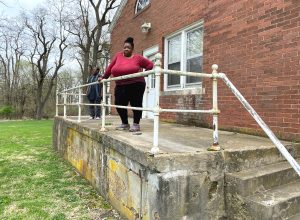Before I moved to Central Illinois, I hadn’t spent much time thinking about the ways arts and culture programs affect a community. Living in a mid-sized town/small city/micro-urban area for a little over a decade has changed the way I think about community and what it means to have access to those types of programs. Dynamic arts and culture programming signals that residents are engaged and active, that this is a place people should want to live. It signals that a municipality values its citizens, and is interested in helping create a community where a rich quality of life is revered. An engaged arts community celebrates and challenges its members and residents; it’s more than a collection of people making stuff or putting on performances. These programs indicate there is an infrastructure that supports community connection and potential for conversations about difficult subjects that can advocate for change.
Active and critically engaged arts support systems within communities are vital to the growth and progress of small towns like Champaign-Urbana. In a diverse community like C-U, intersectional conversations bring together groups that may not have otherwise got together: town and gown, business and arts, activists and policy makers. Arts and culture programming–live music, youth workshops, community murals, grants for artists, among other things—is uniquely situated to provide (actual) space for people to get together and bond over a shared experience.
As financial support and physical spaces for arts and culture programs in small towns disappear, artists are left to either discontinue their work, or send their skills and interests elsewhere to places and communities that have funding and dedicated spaces for exhibiting and/or performing. There is a creative brain drain on their home communities. Once those networks are dismantled, it’s very hard to build them back up again. Champaign-Urbana is not lacking creative people; we have so many incredible artists who work very hard to build and expand their communities. What C-U is lacking is the infrastructure to meet that potential.
Champaign-Urbana may be hyphenated, but they are two separate cities with their own mayors, city councils, rules, regulations, and agendas. The priorities are slightly different, and the culture of each town is different. Champaign is larger and wealthier than Urbana: according to census.gov, the 2019 population estimate in Champaign is just under 89,000 people, with a median household income of $47,502; whereas Urbana’s population is just over 42,000 people, with a median household income at $35,820.
When it comes to arts and culture funding and programming, the two cities handle things very differently. These different modes of funding the arts in Champaign and Urbana have resulted in very different outcomes for each city. The City of Champaign does not have any employees dedicated to developing public arts and culture programs. There are no annual budget line items to account for consistent arts funding. Artists and arts and culture groups working in Champaign have relied on haphazard funding from a variety of sources for years, and the result is the loss of most public-facing arts nonprofits and businesses, including Figure One gallery, The Art Theater, The HighDive, which became the Accord and then 51 Main, Indigo Gallery, which became 217 Gallery, then moved to Urbana under a new name, SoDo Theater, Memphis on Main, among others.
The City of Urbana approaches things differently. Although their annual budget is smaller than that of Champaign, it has an arts and culture program that works to support artists living and working in the city, which includes a full-time employee and a commission made up of nine people that advises the mayor on “ways to further the development of, and interest in, the arts and the local cultural heritage.” Funding comes from the city’s general fund and, in some cases, Tax Increment Financing (TIF) funding. The Urbana Arts & Culture Program supports a variety of annual and single-event programs, commissions public art, and provides grants.
Additionally, the Champaign and Urbana Park Districts regularly offer cultural classes and events, including dance, fine arts, and live music performances. Most of the funding for these “separate units of local government” comes from taxes and not from the city budgets. While some events are free to the public, classes are fee-based.
In Champaign, most of the arts programming is done by 40 North, a Champaign County-based arts advocacy non-profit organization whose mission is “Cultivating Creativity in Champaign County,” which is further organized around three principles: advocate, inform, and collaborate. 40 North has been around since 2002, but has always been a one or two employee organization. Executive Director Kelly White has been in the position since 2009, and has been running the organization on her own (with oversight from the Board of Directors and the help of many volunteers) for the last few years. I reached out to White several times for an interview for this article, but my requests went unanswered.
Based on their budgets, it appears that neither Champaign nor Urbana provide regular annual funding to 40 North. In August 2019, the City of Champaign approved a one-time payment of $20,000 so the organization could hire someone to do promotion for its annual programs.

40 North’s two signature programs are Boneyard Arts Festival (early April; a “four-day event showcasing the broad range of creative activity flourishing in our community. Its goal is to bring together local artists, businesses and organizations for a special event showcasing the art of Champaign County”); and Friday Night Live (May-August; “a free street-side performance series open to the general public” in Downtown Champaign). These two events are eagerly anticipated and well attended; their cancellations this year due to COVID-19 have been felt acutely.
40 North made plans to launch an art fair at Crystal Lake Park in Urbana this year; those plans appear to be on hold given the current circumstances. Additionally, the organization works with an outdoor signage company and the Champaign-Urbana Mass Transit District to put art on billboards and busses, mounts an annual exhibition of juried high school artwork, partners with Poetry Out Loud, and runs a small gallery space inside of a telecommunications company office, among other projects. Its annual fundraiser is a themed party, and the organization recognizes exceptional individuals in the community through an annual award program (though there is no monetary component to the awards). 40 North does the best it can with the resources it has available—one employee and a very limited budget—but it can’t provide everything the arts in Champaign County need.
I’ve lived in Champaign for 11 years, and in that time it’s become clear that there is very little corporate giving, especially for the arts. The University of Illinois absorbs most local philanthropy; there are many opportunities to make large donations, especially around the athletics programs. A quick look at the list of 40 North’s partners reveals mostly non-profits or governmental agencies; sponsors for last August’s Friday Night Live are mostly small radio stations. Research Park at the University of Illinois is home to more than 15 multinational and publicly traded companies, as well as over 50 startup companies, but these businesses do not appear to offer financial support for arts and culture programming. Likewise, the two large hospital systems, Carle and OSF Healthcare, do not appear to offer support to cultural programs in C-U.
In those 11 years, I’ve watched the downtown Champaign area be gutted of almost all artistic spaces. There are no community murals in downtown Champaign. It has lost all live music venues (though a couple of bars still host some small shows), the area’s only art house movie theater showing independent cinema, an artist co-op gallery, a privately owned art gallery, the only University of Illinois off campus art gallery, and a small theater space used by several theater groups. PYGMALION, a 15-year running multi-disciplinary festival featuring live music, literature, comedy, podcasts, and technology, used to take place in Champaign and Urbana over the course of a few days, but since 2018 it has taken place exclusively in Urbana.* There are many complicated reasons for these sorts of businesses and non-profit spaces to close (even before COVID-19)—logistics, mismanagement, and increasing costs of rent, for instance—but among those reasons is an institutional negligence to ensure their success.

Meanwhile, Champaign’s mayor (who is also the liquor commissioner) and city council continue to approve building projects for bars and breweries (at the time of publication, there are about 20 places to get drinks downtown). The small theater space was approved to become an axe-throwing bar. In the four-ish years since the University of Illinois off campus gallery space closed, the location has been a wine bar and is now a beer-cade. Recently, the City of Champaign approved a $250 million dollar multi-sports arena and convention center for downtown. A project like this indicates there is a desire to “revitalize” downtown and make long term economic investments, but there does not appear to be any stipulation made by the city for the addition of any cultural spaces or programs to balance the residential, retail, and convention center developments.
Outside of downtown, Champaign and Urbana have become home to many large, expensive apartment complexes or multi-use buildings marketed to international and wealthy students from the Chicago suburbs. The problems with these buildings is not their aesthetics (though they leave much to be desired), but rather that they are not fully occupied; in many cases builders receive tax incentives to build, but not to fill. In my experience, driving around Champaign and seeing for lease signs in so many of the ground level spaces is equal parts depressing and frustrating. Even beyond wanting more arts spaces, there are many incomplete improvement projects in Black neighborhoods. What will become of these spaces when fewer students return to the U of I campus because of the COVID-19 pandemic this fall? What will happen to these spaces if federal agencies continue to limit the number of foreign visitors, visas, and permanent resident cards? If the student population drops, or is otherwise altered, where do investors put their money?
Rachel Lauren Storm has been the Arts & Culture Coordinator in Urbana for three years. According to Storm, this year the program “gave out 38 Urbana Arts Grants totaling $88,000. Later this year, we will name our 2nd Poet Laureate, which also carries a small honorarium award of $2,000. We host over 100 events and programs throughout the year between our various initiatives.” Included in those events and programs are an award-winning video series, Art Now!, featuring artists living and working in C-U, as well as regular public art installations like Murals on Glass and Utility Box Murals and Artist of the Corridor exhibitions in collaboration with the Urbana Free Library.
Storm is a past recipient of some of Urbana’s grants, and has a keen understanding of the community and what is needed to continue to develop artistic production. She told me:
“Urbana is always diversifying, the University [of Illinois] continues to expand and grow, and local needs are always emergent and evolving. I come from the world of “artist as activist” and that world can be quite distinct from the professional artist world at times…“
“Since assuming the role of Arts & Culture Coordinator, I launched some new programs, [including] Urbana’s Downtown Get Down, Urbana’s Poet Laureate Program, and Open Scene Open Mic. I like to think that Urbana’s arts and cultural scene continues to grow and move. I’ve worked in partnership with others to foster some expansion (recognizing the inextricable link between arts and culture; diversifying our commission; diversifying representation in many of our programs; and expanding programs to support our goals) that I hope meets the growing needs of our arts community.”
The University of Illinois and the two area hospitals keep the local economy relatively stable, but many of C-U’s businesses are built to thrive on the influx of students. When students aren’t on campus, revenue streams trickle, and with the added complication of COVID-19, much has dried up. Both Champaign and Urbana will face million-dollar losses, which will affect the budgets for the future. It’s unclear how long this pandemic crisis will last, but the effects will linger for years. As Storm noted, “we know that recovery from that loss will mean a reduction of services and programs.” Urbana’s Arts & Culture Program has already cancelled and postponed events; 40 North has done the same. As donors’ wallets also shrink, it will be difficult for financial support to grow. In these twin cities where there is virtually no culture of corporate giving for the arts, this could have dire consequences for the limited options we currently have available.

The economic problems resulting from COVID-19 have destabilized the normally stable economic foundation found in the University of Illinois and two large hospitals. Both Champaign and Urbana city councils are re-evaluating their budgets, and history shows us that arts and culture funding are among the first to be cut. The recent calls for racial justice and defunding the police provide an opportunity for community members to advocate for diverting municipal security force funding to arts and culture programs in addition to social services and wellness programs. Arts and culture can be used to promote healing; they are not just limited to luxury. Arts programs could compliment social services in schools, as replacements for school resources officers. All organizations will be looking at their budgets, and it’s up to community members to agitate for the things we want in our community, not just the things organizations think we need.
How does a small city (or two small cities) actively support a creatively engaged community? The task of building up a creative and artistic community cannot only be the responsibility of those directly involved. We know from other examples that creative people and artists will find ways to express themselves regardless of institutional support, but that isn’t reason to deny them appropriate compensation, financial support, and opportunity.
The importance of a physical space to house arts and culture activities cannot be understated. C-U is not rich with venues ready to house art exhibitions, performances, or live music. 40 North serves all of Champaign County, for instance, but does not have a dedicated building for launching programs; it only has an office space. Instead of approving the opening of another bar, is there a way for the City of Champaign to work with 40 North, corporate donors, and landlords to create an arts and culture space? I believe that there are individuals who are willing to do the work, they just don’t have the funds.

What is needed in order to achieve a robust, diverse, and inclusive arts community in C-U is a concerted collaboration between the municipalities, the University of Illinois, the Champaign and Urbana Park Districts, and arts organizations like 40 North. When I asked Storm what the Urbana Arts & Culture Program needs to be successful, she responded:
“We need a community of artists and a diversity of cultural and arts organizations that are supported and empowered. We need a dynamic assessment of the arts as “essential” and a strong commitment to its preservation. We need to understand that artists are deeply connected to the wellness of a community and create culture, build bridges, and bring innovation to solving global problems. In a crisis, artists and cultural workers are needed more than ever.”
This sentiment applies to more than a small town arts program—it can be scaled up and down. It is more important than ever for residents of C-U’s micro-urban community to use their voices to demand more from our elected officials and our neighbors. When municipalities can work in good faith with nonprofits and corporations to fund arts programming, they all affirm a commitment to the social, cultural, and psychic health of the community.
It is worth clarifying that there is still a rich creative community in Champaign-Urbana and that we are not without opportunities to engage with the arts. The University of Illinois provides most arts and culture programming through Krannert Center for the Performing Arts and Krannert Art Museum. Ebertfest, the annual film festival that takes place each April in Champaign, is organized by the College of Media at the U of I. Screenings are held at the Virginia Theater, a restored performing arts center and cinema owned and operated by the Champaign Park District.
Support for the arts supports us all. Evidence shows that arts and culture programs help people connect and develop empathy. Given the state of American society, we could all use a little more of both.
*The author is a Managing Editor at Smile Politely, a culture magazine in Champaign-Urbana. The same company owns both PYGMALION and Smile Politely, though they are separate entities.
Featured image: The marquee of The Art Theater in Champaign, Illinois reads “For Sale or Rent.” The Art Theater’s sign is red and retro. The brick building is located on a downtown street, with residential apartments above the theater. Photo by Jessica Hammie.


Jessica Hammie is a writer based in Champaign, Illinois. She is interested in the ways in which artists visualize identity, and how we come to understand our histories. In addition to writing for Sixty, Jessica is a Managing Editor at Smile Politely, a Champaign-based culture magazine.





